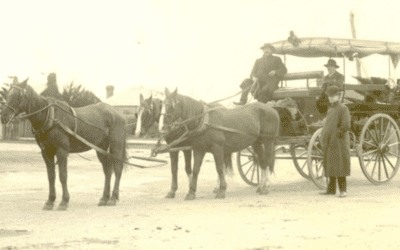The air transportation system is complex and is an interconnected process that’s vulnerable to disruptions. The air cargo industry relies heavily on the efficient flow of freight through integrated transportation networks.
This vulnerability was highlighted when a FedEx Boeing 757-200 aircraft made an emergency landing at the Chattanooga Airport. The aircraft was heading to the carrier’s “Super Hub” in Memphis, Tennessee, for the package to be sorted and shipped. Pilots reported a warning light after the aircraft took off from Chattanooga due to insufficient cabin pressure. The three-person crew decided to return to the Chattanooga Airport, which pushed operations back significantly.
Article Overview
The intricacies and potential pitfalls of air cargo freight are ever-changing. Taking a closer look at the different models within the system and how to optimize scheduling and connectivity is beneficial for companies.
The Hub-and-Spoke Model
Major overnight shippers, like FedEx, UPS, and DHL air cargo, often use the hub-and-spoke model for efficient cargo operations. The model relies on central hubs that connect to smaller “spokes” or stopping points. This system allows airlines and shipping companies to organize their routes effectively.
Large entities operate an extensive distribution center network with strategic placements across the globe. For example, FedEx’s central hub is located in Memphis, Tennessee, and UPS is located in Louisville, Kentucky. Many planes fly to these hubs from cities around the country. Once they arrive at the super hub, packages are sorted and put on planes to arrive at their final destination.
Hub-and-Spoke Model Benefits
There are a few reasons companies use the hub-and-spoke model for air cargo freight. The benefits of this system include:
- Optimized Routes
Hubs such as Memphis and Louisville are strategically situated close to highly populated centers, making them ideal for efficient cargo distribution. Instead of having multiple planes flying between every single city, companies only need flights between cities and the hub.
- Efficiency
The hub-and-spoke model allows airlines to create efficiencies within a specific timeframe, ultimately saving the business money. This model enables a time-based delivery and deliveries in a particular region before moving to the next hub.
Hub-and-Spoke Pitfalls
While efficiency is a benefit to the hub-and-spoke model, it can also be the cause of potential downfalls. Airlines and cargo carriers rely on these intricate systems, ensuring packages reach their destination on time. But what happens when delays disrupt the scheduling of the aircraft?
- Domino Effect Delays
One of the benefits of the hub-and-spoke model is its interconnectivity. This system has a central hub that acts as the primary point where flights join for sorting and redistribution. Delays within this hub can create a domino effect, impacting numerous other flights connected to it. This ripple effect can result in a series of further delays, causing disorder within the network.
- Concentrated Cargo Sorting
The central hub plays a pivotal role in sorting and redistributing packages. The sorting of cargo is concentrated at these hubs, where packages from various aircraft are organized and then placed on the next craft for the destination. Sorting cargo is a time-sensitive process planned thoroughly, leaving substantial backlogs when delays occur.
Point-to-Point Model
The point-to-point model is an alternative to the hub-and-spoke model. In this system, planes fly directly between two cities rather than routing through a central hub. The planes usually operate out of smaller airports and are used by lower-cost airlines such as Southwest Airlines.
A good example of this model is a flight heading directly from Atlanta to Miami without any stop in between. This model reduces travel time by eliminating layovers and preventing delays from spreading from one airport to another. However, the point-to-point system lacks redundancies, leaving few backup plans when disruptions occur.
- Pointing Towards the Benefits
The point-to-point model offers some key benefits, such as skipping hub connections and reducing total travel time. For instance, say there’s a plane flying into Denver to connect to another flight. If there is an issue with one of the connecting flights, like a delay or technical issue, this can be inefficient. Conversely, the point system avoids these inefficiencies, which is why it’s often associated with operations at smaller airports and embraced by low-cost carriers.

Disadvantages of Point-to-Point Model
The model also has some disadvantages. With fewer redundancies built into the system, there are limited backup options when delays or aircraft issues occur. The system can be highly prone to disruption if one link in the chain is impacted. Let’s take a look at a couple more drawbacks:
- Low Frequency
Point-to-point systems have fewer daily flights than the hub-and-spoke model, which limits flexibility for shippers who require frequent departures.
- Connecting Flights
The point-to-point model doesn’t have connecting flights built into their system. This means travelers or cargo must be rerouted through intermediate hubs for onward journeys, which can be less efficient.
- High Operational Costs
Maintaining a network of point-to-point routes can lead to higher operational costs for airlines. These expenses include fuel, maintenance, and crew expenses, which may ultimately impact shipping prices.
The Pros and Cons of Air Freight
The main difference between point-to-point and hub-and-spoke models revolves around the market size. Point is used for connecting smaller cities with high demand but serves a relatively limited number of destinations overall.
Conversely, the hub-and-spoke model typically links larger cities with large distances between them, which serves a broader range of destinations. Ultimately, the demand between the two cities is low, but the total number of cities served by the airline is large.
The choice between the two models ultimately depends on the company’s specific needs, target markets, and operational preferences.
Airlines that serve high-demand routes with cargo flow may find point-to-point more beneficial. Companies seeking broader connectivity and the ability to serve a more significant number of destinations may have more advantages in the hub-and-spoke model.
Exploring the Dynamic Landscape of Air Freight
Air freight is complex, with interconnected networks that can be susceptible to disruptions. However, the potential issues that come with operations continue to evolve. To learn more about the complexities in the industry, be sure to check out our podcast, Shifting Gears. If your business demands secure, efficient air freight, know that KCH Transportation is your trusted partner. We manage the challenges of the air freight landscape seamlessly, ensuring your shipments arrive swiftly and securely, wherever they need to be.






